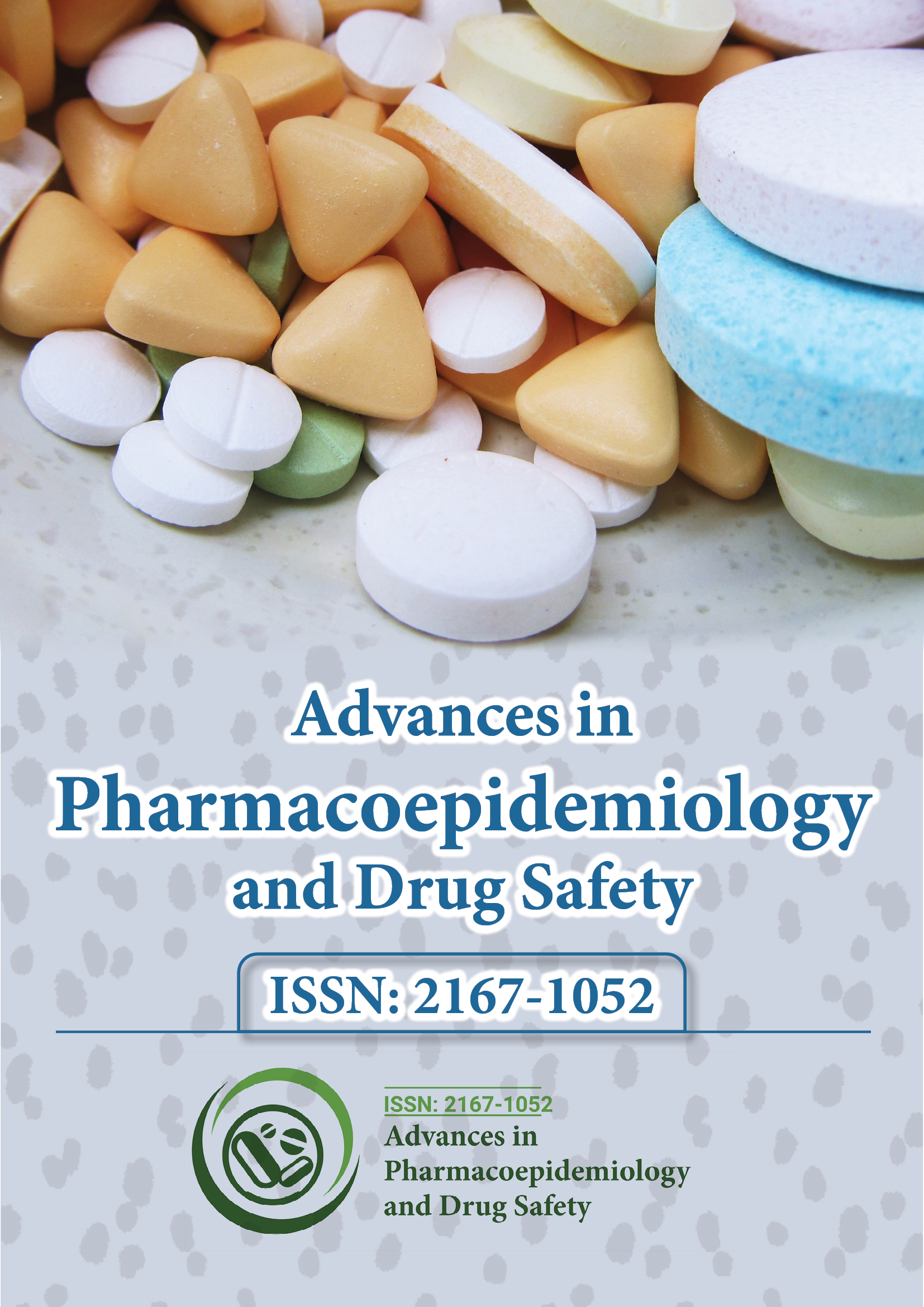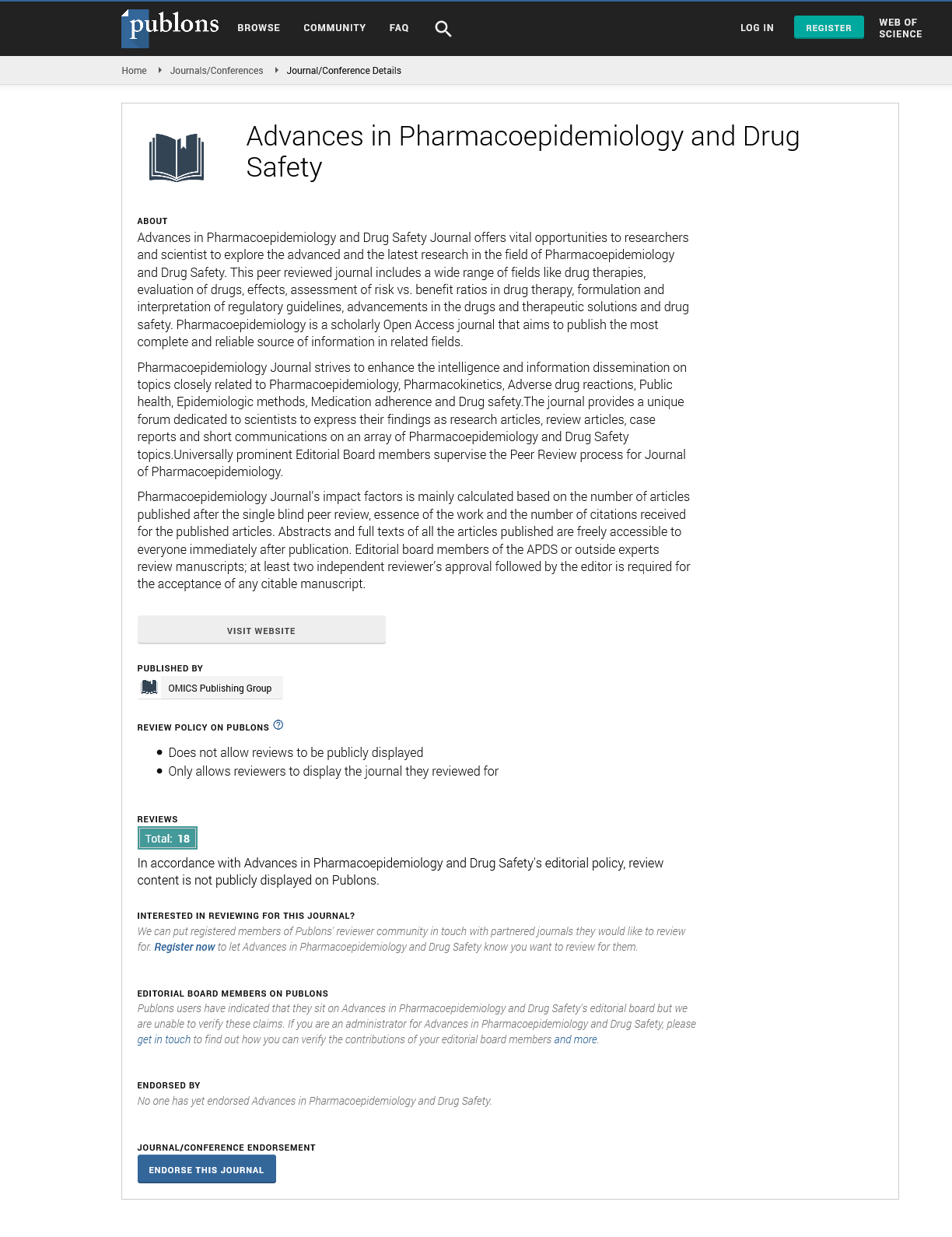Indexed In
- Open J Gate
- Genamics JournalSeek
- Academic Keys
- JournalTOCs
- RefSeek
- Hamdard University
- EBSCO A-Z
- SWB online catalog
- Publons
- Geneva Foundation for Medical Education and Research
- Euro Pub
- Google Scholar
Useful Links
Share This Page
Journal Flyer

Open Access Journals
- Agri and Aquaculture
- Biochemistry
- Bioinformatics & Systems Biology
- Business & Management
- Chemistry
- Clinical Sciences
- Engineering
- Food & Nutrition
- General Science
- Genetics & Molecular Biology
- Immunology & Microbiology
- Medical Sciences
- Neuroscience & Psychology
- Nursing & Health Care
- Pharmaceutical Sciences
Opinion Article - (2024) Volume 13, Issue 3
Modulating Oxidative Stress: The Role of Pharmacological Agents in Redox Homeostasis
Cuihong Shouchao*Received: 30-Aug-2024, Manuscript No. PDS-24-27222; Editor assigned: 02-Sep-2024, Pre QC No. PDS-24-27222 (PQ); Reviewed: 16-Sep-2024, QC No. PDS-24-27222; Revised: 23-Sep-2024, Manuscript No. PDS-24-27222 (R); Published: 30-Sep-2024, DOI: 10.35250/2167-1052.24.13.369
Description
The interaction between pharmacology and redox homeostasis is a significant area of research that has attracted attention for its implications in various diseases. Redox homeostasis refers to the balance between oxidants and antioxidants within biological systems. It plays an essential role in maintaining cellular function and integrity. Disruption of this balance can lead to oxidative stress, which is implicated in numerous diseases, including neurodegenerative disorders, cardiovascular diseases, and cancer.
Pharmacological agents can modulate redox homeostasis through various mechanisms, influencing oxidative stress and its related pathways. Drugs may enhance antioxidant defenses, scavenge Reactive Oxygen Species (ROS), or inhibit oxidative stress pathways. Understanding these mechanisms is essential for developing effective therapeutic strategies aimed at restoring redox balance and mitigating the impact of oxidative stress.
One of the critical aspects of drug action on redox homeostasis is the ability of certain compounds to act as antioxidants. Antioxidants are molecules that can donate electrons to free radicals, neutralizing them and preventing cellular damage. Compounds such as vitamin C, vitamin E, and various flavonoids have been extensively studied for their antioxidant properties. Research has demonstrated that these antioxidants can reduce oxidative stress and improve outcomes in conditions like diabetes, cardiovascular diseases, and neurodegenerative diseases.
For example, studies have shown that vitamin C can reduce oxidative damage in patients with chronic diseases by improving the body's antioxidant capacity. This effect is particularly relevant in conditions characterized by high oxidative stress, such as atherosclerosis and Alzheimer’s disease. The role of antioxidants in modulating redox homeostasis illustrates how pharmacological agents can have a protective effect on cellular systems.
In addition to traditional antioxidants, newer pharmacological agents are being developed to target redox signaling pathways more specifically. One such class includes drugs that modulate the activity of the Nrf2 pathway, a critical regulator of antioxidant response. Nrf2 is a transcription factor that, when activated, leads to the expression of various antioxidant genes. Compounds that can activate Nrf2 are being investigated for their potential to counteract oxidative stress in various disease models.
Research indicates that pharmacological activation of Nrf2 can provide neuroprotection in models of neurodegeneration, suggesting a therapeutic approach for diseases like Parkinson’s and Alzheimer’s. For example, sulforaphane, found in cruciferous vegetables, is a potent Nrf2 activator that has shown potential in preclinical studies for its ability to reduce oxidative stress and inflammation in neuronal cells.
Moreover, some drugs directly target mitochondrial function to restore redox balance. Mitochondria are not only the centers of the cell but also significant sources of ROS. The accumulation of oxidative damage in mitochondria can lead to cellular dysfunction and apoptosis. Agents that improve mitochondrial function and bioenergetics can effectively reduce oxidative stress.
The modulation of redox homeostasis by pharmacological agents also extends to the inhibition of specific pathways involved in oxidative stress. For example, some Non-Steroidal Anti- Inflammatory Drugs (NSAIDs) and corticosteroids exhibit anti inflammatory properties that can indirectly reduce oxidative stress. By reducing inflammation, these drugs can decrease the production of ROS, thereby promoting a more favorable redox environment.
In conclusion, the pharmacological effects on redox homeostasis represent a dynamic and evolving field with significant implications for human health. Understanding how drugs influence oxidative stress pathways can lead to the development of novel therapeutic strategies for a range of diseases characterized by redox imbalance. The combination of traditional knowledge with modern pharmacological research continues to reveal new possibilities for managing oxidative stress and improving health outcomes. Ongoing studies will undoubtedly contribute to a more comprehensive understanding of how to effectively utilize these mechanisms in clinical practice.
Citation: Shouchao C (2024). Modulating Oxidative Stress: The Role of Pharmacological Agents in Redox Homeostasis. Adv Pharmacoepidemiol Drug Saf. 13:369.
Copyright: © 2024 Shouchao C. This is an open access article distributed under the terms of the Creative Commons Attribution License, which permits unrestricted use, distribution, and reproduction in any medium, provided the original author and source are credited.

